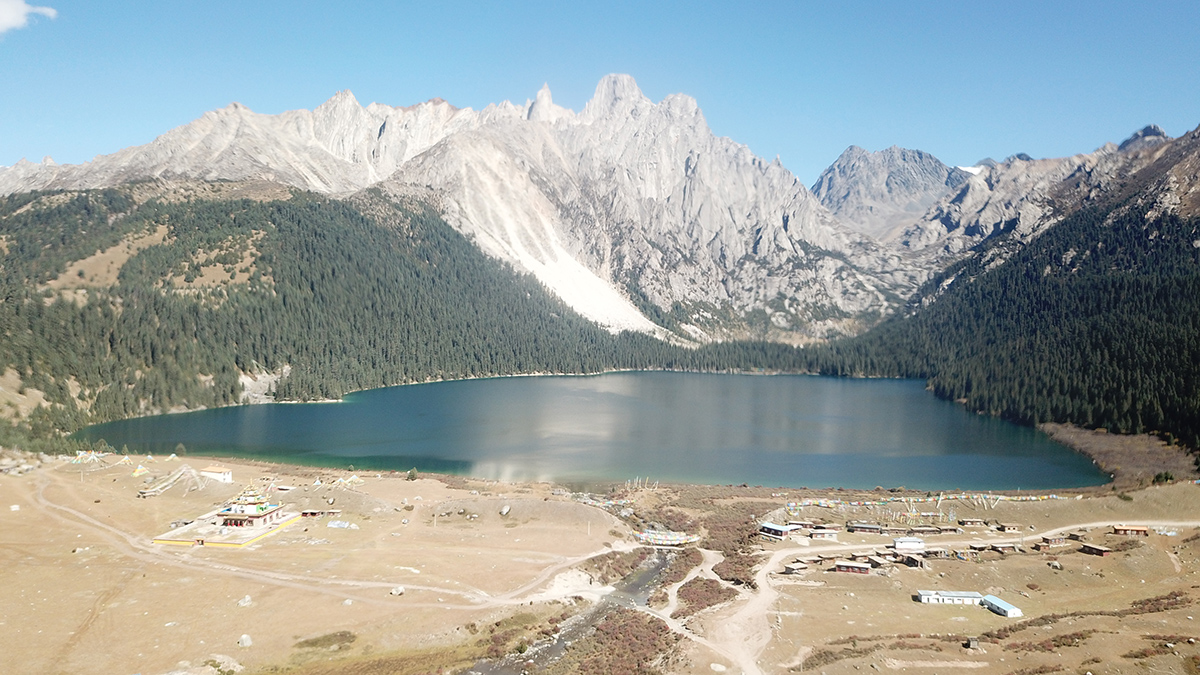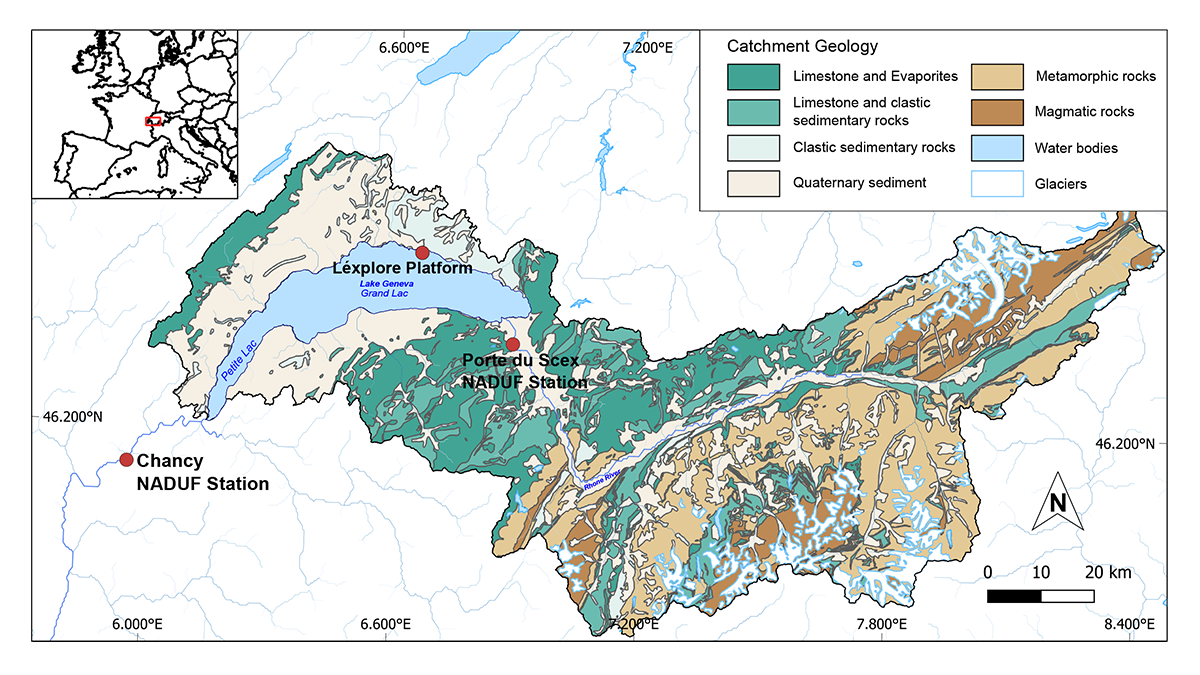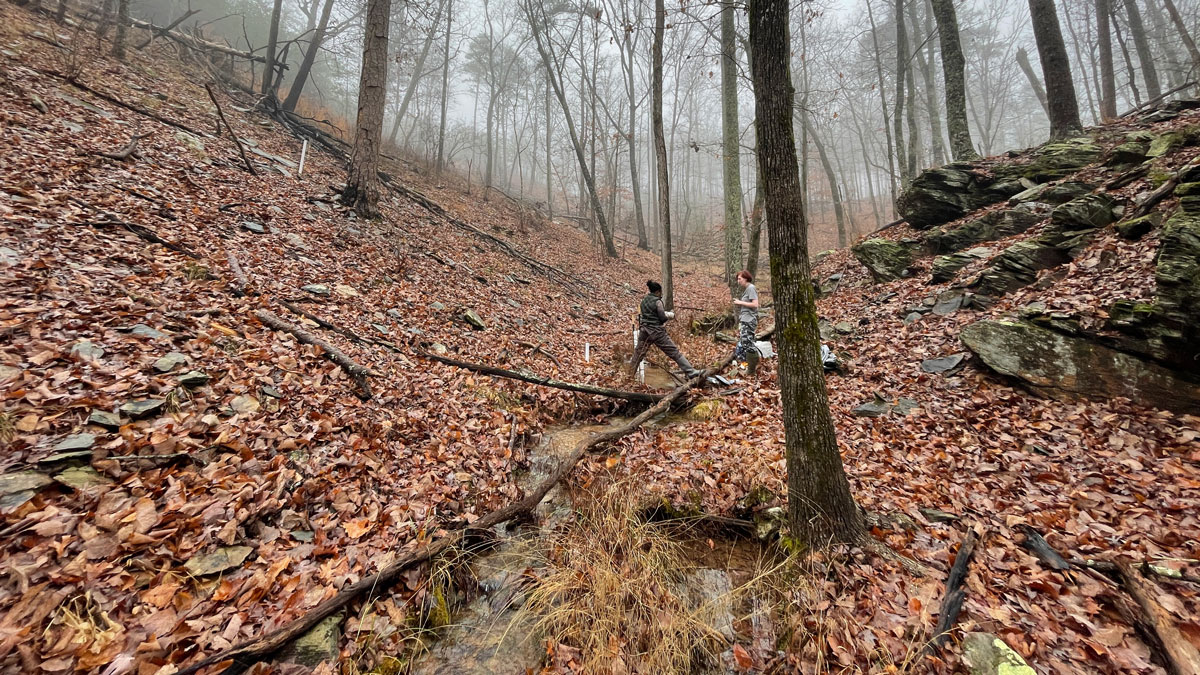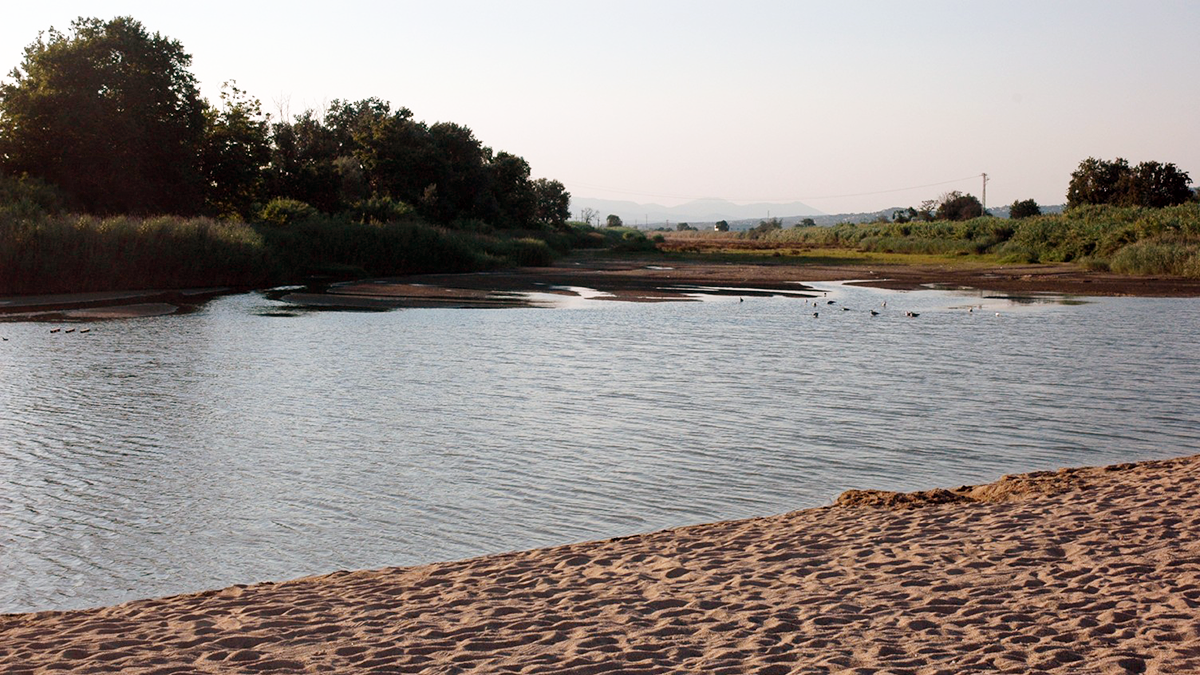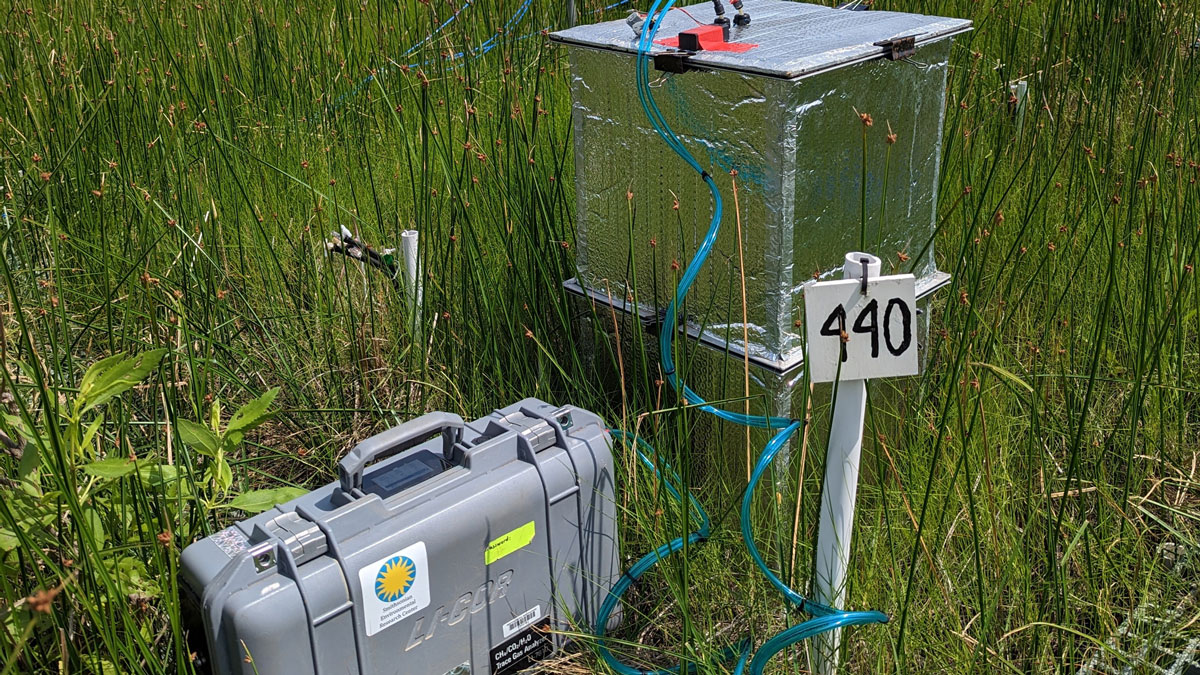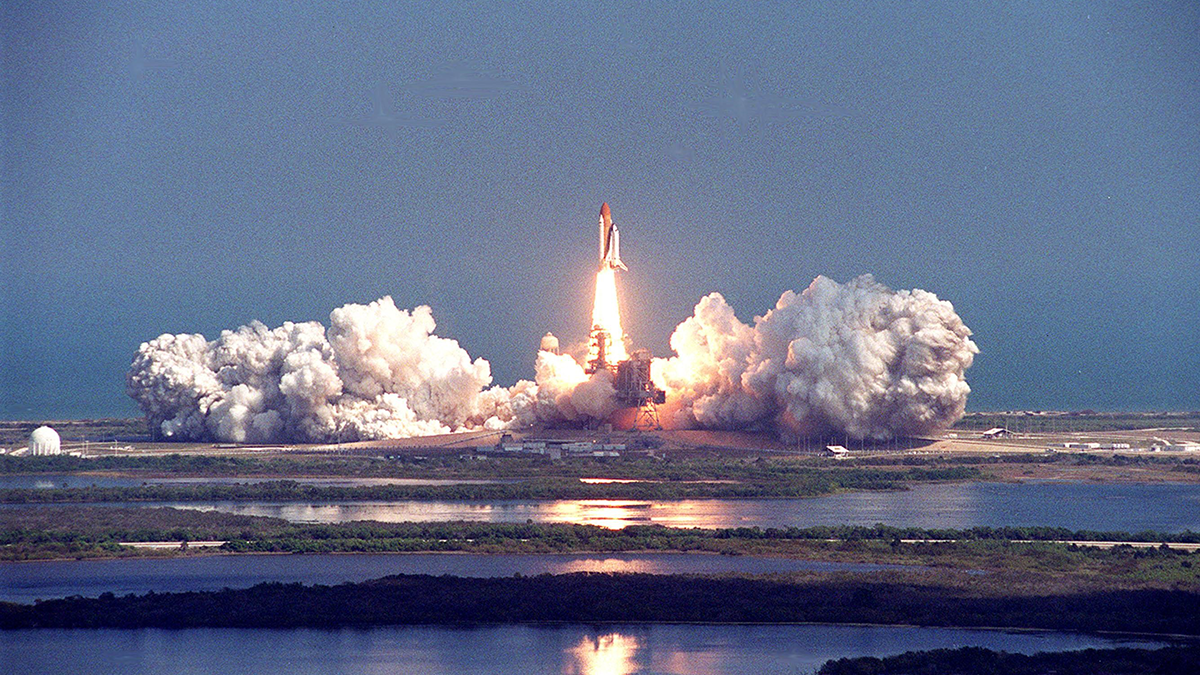After an earthquake, a lake’s geological, chemical, and biological components get reconfigured. A new study dives into the effects of seismic shifts on the Himalayas’ Lake Cuopu.
Journal of Geophysical Research: Biogeosciences
How Plants Respond to Scattered Sunlight
A new study investigates how diffuse light affects evapotranspiration and carbon uptake across forest, grassland, shrub, and agricultural areas.
Organic Radiocarbon Reveals its Inorganic Ancestry in Lake Geneva
Organic and inorganic radiocarbon ages resolve the origin and dynamics of carbon in the largest natural lake of Western Europe.
The “Surprising” Effect of Drying Headwaters on Nitrogen Dynamics
Contrary to predictions, spring rains caused a decrease in nitrogen at watershed outflows in Alabama.
Seeping Groundwater Can Be a Hidden Source of Greenhouse Gases
A new study in the Farmington River watershed shows that groundwater seeps can release 20% of dissolved emissions into the atmosphere before the water joins streams.
Carbon-Nutrient Ratios Drive Nitrate Removal in Mediterranean Streams
The type of organic matter, and ratio of nutrients to carbon, impact the ability of heterotrophic bacteria to effectively remove certain forms of nitrogen pollution (nitrate) from streams.
Filling the Gaps: Context and Design of Arctic Carbon Flux Measurement Networks
Large scale observational networks are necessary for understanding the impact of a warming climate in the Arctic, but critical tools are crucial to how those networks are designed.
What 92 Years of Data Say About Ice Cover
New research on Mohonk Lake in New York investigates how changing ice phenology alters temperature dynamics in lakes.
New Software Package Helps Scientists Find Flux
An easy-to-use R package offers a more efficient way to sort through and analyze data about greenhouse gas levels collected in static chamber experiments.
Improvements to Measuring the Ups and Downs of the Landscape
If you are a jazz fan, you may be familiar with Ella Fitzgerald singing ‘How deep is the ocean, how high is the sky’. Using data from the Shuttle Radar Topography Mission we now know how high the land really is.

